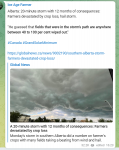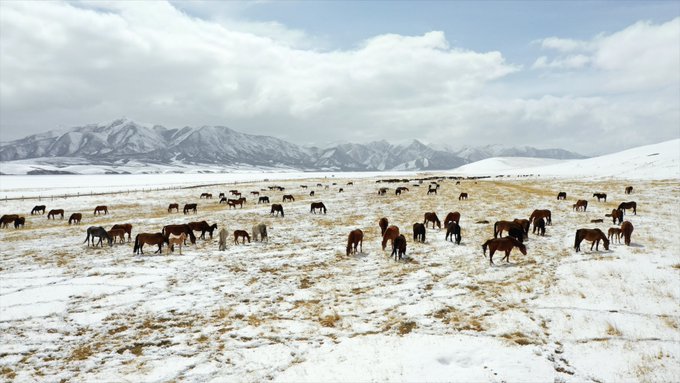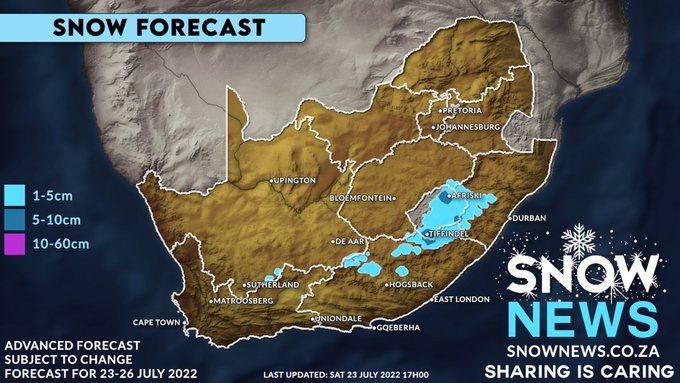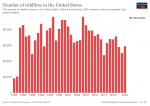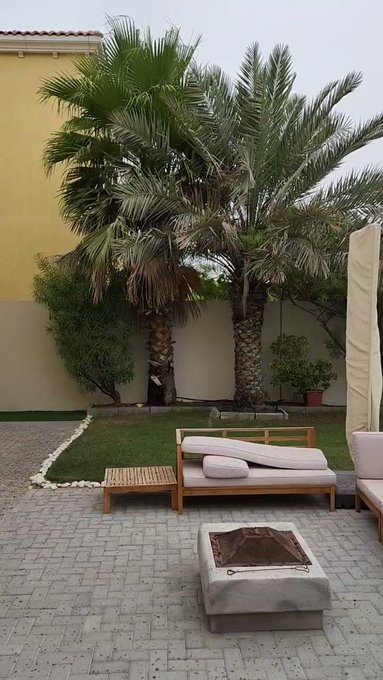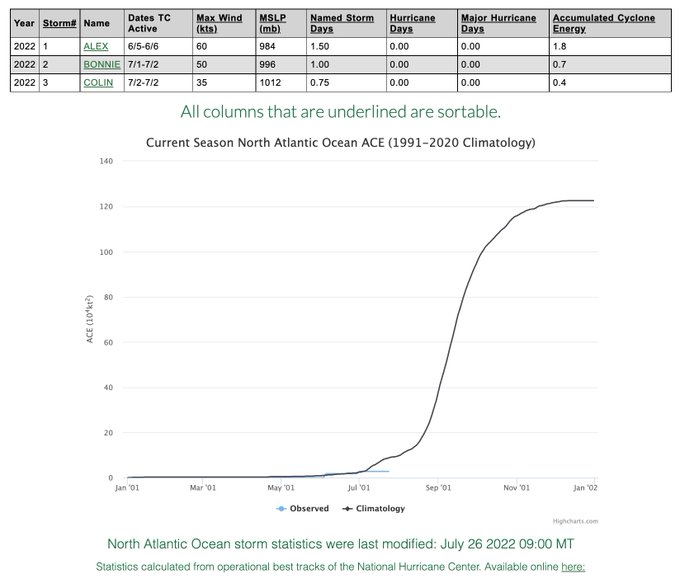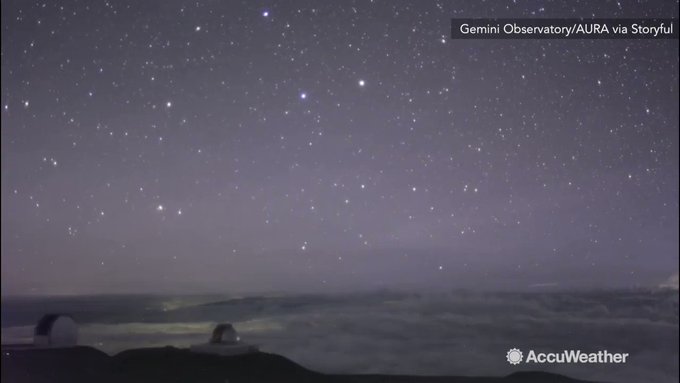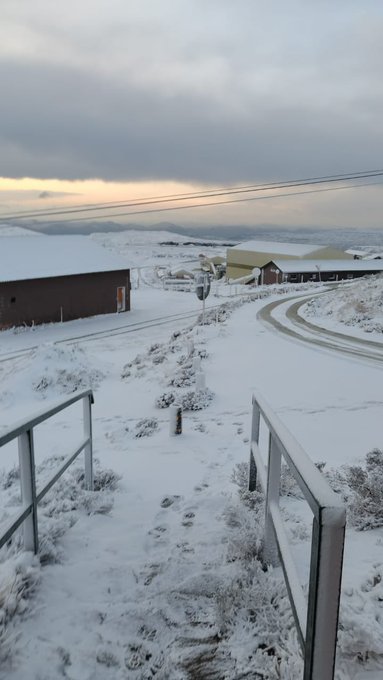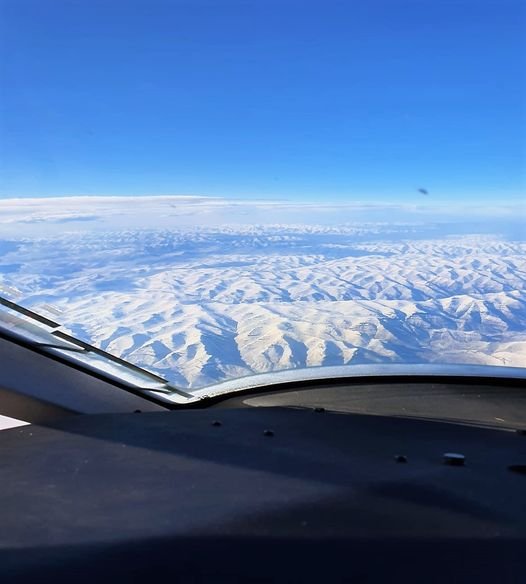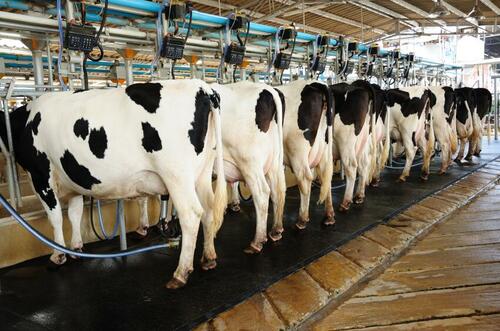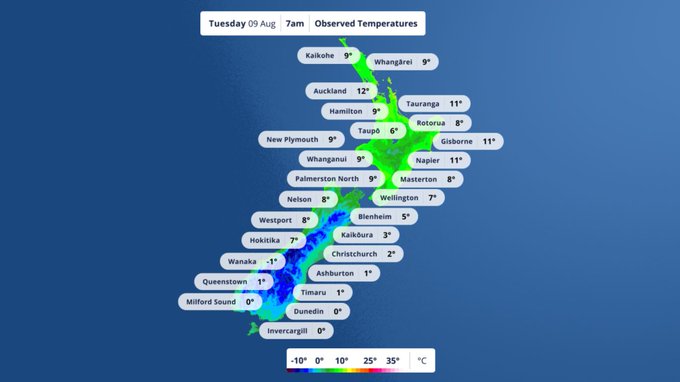jed turtle
a brother in the Lord
If I could only get everyone to just READ this article...Electroverse

Articles Extreme Weather Volcanic & Seismic Activity
Is Australia Experiencing A ‘Volcanic Winter’?
July 18, 2022 Cap Allon
Significant polar fronts have delivered record-low temperatures and record-high snowfalls to swathes of Australia in recent weeks. The continent is on for one of its coldest winters on record. But why…?
June was an exceptionally cold month, according to data provided by the Bureau of Meteorology (BoM):

And July is continuing that frigid trend.
Serving as just three recent examples: Alice Springs busted its longest streak of sub-zero days in recorded history; secondly, on July 15, Hillston Airport, NSW logged -6C (21.2F) — its lowest temperature ever recorded; and, thirdly, just last night, snow settled across many of Hobart’s suburbs, almost reaching sea-level in Tasmania’s south, and an apparent low of -20C (-4F) was observed.
Tasmania Today
@today_tasmania
·
Follow
This morning at Fern Tree in the foothills of kunanyi/Mt Wellington Welcome to #SnowBart. What a chilly start to the week… with snow falling as low as 150 metres overnight video: http://instagram.com/jeon_landscapes
Link to tweet
10:09 PM · Jul 17, 2022
“[It is] a very cold outbreak for the state, with snow showers down to low levels –nearly sea level– with a few reports of snow flurries, so not settling, to about 20 meters above sea level in Howden,” said BoM forecaster Luke Johnston.
And there are MORE freezing nights on the way.
“All the cold air over Tasmania is just going to sit here all week,” added Johnston, pointing out that the next few mornings would be “very, very cold for most of Tasmania … with widespread minimum temperatures between -2C and -4C (28.4F and 24.8F)”.
But in these times of ‘catastrophic global hotty heat hot’ –I think that’s the official term now– why is it so consistently cold, and ACROSS a continent as large as Australia, too?
Climatologist Emeritus Professor Roger Stone from the University of Southern Queensland believes an increase of ice around the Antarctic has led to a lot of snow on the southern Alps, causing “what we call the Thredbo Index to go up”–a phenomenon he has also tied to a rare third La Niña.
However, there are many theories doing the rounds, as is only good an proper; and while the media likes to focus on a rare third La Niña –likely because this oceanic COOLING can be somewhat chiseled and rounded to fit their ‘climate change’ hole– an overlooked factor is volcanic activity, namely Hunga Tonga-Hunga Ha’apai’s record-high mesopsheric eruption in January.
Michael Ferragamo
@FerragamoWx
·
Follow
The eruption of the Hunga-Tonga Volcano caused the tallest ash plume ever recorded. It’s height was recorded at approximately 38 miles, poking into the Mesosphere. That’s over 200,000 feet tall. Amazing.
Link to tweet
5:27 PM · Feb 20, 2022
Volcanic eruptions are one of the key forcings driving Earth into its next bout of global cooling. Their worldwide uptick is tied to low solar activity, coronal holes, a waning magnetosphere, and the influx of Cosmic Rays penetrating silica-rich magma.
Hunga Tonga’s eruption of Jan 15 fired particulates through the stratosphere and into the mesosphere.
At 36 miles up, it was the highest volcanic eruption ever recorded.
Those particulates are now ‘trapped’ in the upper atmosphere, and are forecast to cool the planet by approx. 0.3C. It has been suggested that Australia’s exceptionally cold and snowy winter of 2022 is being driven, at least in part, by these trapped volcanic aerosols.
Of late, Antarctica has been awash in dazzling pink and plum hues — all due to the “afterglow” of the Tongan eruption:

The Antarctic sky in the ‘afterglow’ of the Tongan volcano’s January eruption. [Stuart Shaw]
Similarly fiery skies have also been reported across New Zealand and Australia, which scientists, unanimously, are putting down to a spike in aerosols that were hurled up into the stratosphere following the Hunga Tonga’s record eruption.
“Usually in mid-winter, Antarctica is nearly continuously dark, except for a slight ‘nautical twilight’ at around midday, which means the horizon is faintly visible in good conditions,” said Stuart Shaw, a science technician with Antarctica New Zealand, who is stationed at Scott Base for the winter and who captured stunning images of the blazing skies.

‘Vince’s Cross’, viewed from Hut Point looking north. [Stuart Shaw]
“But this year,” continued Shaw, “we were presented with quite a show, which had most of the station personnel grabbing jackets and running outside with their cameras to look at the awesome colors.
“Believe it or not, I haven’t edited these colors either, they are pretty much as we saw them … It’s incredible.” he said.
Data from satellite lidar –a laser radar- shows there is an abundance of aerosols in the stratosphere above Antarctica, which were not there prior to the eruption, said Nava Fedaeff, a forecaster at Niwa.
“Stratospheric aerosols can circulate the globe for months [and even years] after a volcanic eruption, scattering and bending light as the sun dips or rises below the horizon, creating a glow in the sky with hues of pink, blue, purple and violets,” explained Fedaeff.
Where these so-called experts fall silent, however, is on the cooling implications of such a phenomenon.
Scientists have long known the effect of major volcanic eruptions. The Philippines’ Mount Pinatubo, for example, cooled Earth by as much as half a degree Celsius for years after it blew its top in June 1991–a cooling that is obvious in the satellite record:

[Dr Roy Spencer]
And while Antarctica, and indeed Australia, are located many thousands of kilometers from Tonga –the location of January’s eruption– “we share the same skies”, points out Jordy Hendrikx, Antarctica New Zealand’s chief science adviser.
When you dump large volumes of ash and sulfuric acid into the higher reaches of the atmosphere less sunlight reaches the surface of the planet. These particulates act in much in the same way clouds do –as Earth’s sunshade– and a cooling effect is exerted.

Volcanic cooling effect (I went for an image even Jittery Joe-Joe Biden could understand).
The Hunga Tonga-Hunga Ha’apai eruption was one of the largest in modern history, certainly the highest. And with the recent reports of visible aerosols above New Zealand, Australia and Antarctica, they are clearly still up there, still exerting a cooling effect over these regions.
Of course, the Southern Hemisphere comprises of more land masses than just Antarctica, New Zealand and Australia; and to that point, it actually stands that almost wherever you look across the ‘bottom half of the world’ there is significant cooling afoot.
Argentina, for example, just suffered its coldest autumn (March-April-May) since 1976 (solar minimum of cycle 20). And the month of June has continued that trend: temperature anomalies of as low as -3C below the multidecadal norm made for Argentina’s coldest June in 20 years, according to the nation’s meteorological agency SMN.

And likewise in neighboring Uruguay, June 2022 finished with a temperature anomaly of a whopping -2.3C below the average, making for the country’s coldest June in the last 41 years.
Temperature anomalies ranged from -1C below normal in the Southeast, to -3C in the Northwest, according to Inumet.

Moreover, the temperature of the entire planet appears to of been impacted, with a stark decline noted last month:

Earth’s Temperature Saw A Sharp Drop In June, As Did Solar Activity
According to the 15x NASA/NOAA AMSU satellites that measure every square inch of the lower troposphere, planet Earth was actually warmer back in the late-1980s.
And so it stands, while the mainstream media assigns all of its ink to a Western European heatwave –a phenomenon linked to low solar activity, namely its weakening of the jet stream (see link below)– the entire Southern Hemisphere –and the planet overall– is experiencing exceptional cooling–as are the Tropics, which recently experienced their coolest June in 22 years.

Summer Frosts In The Highlands Of Portugal & Spain, As Record Heat Sweeps Italy: Low Solar Activity & A ‘Meridional’ Jet Stream, Explained
The AGW hypothesis can confidently explain Central Europe’s heatwave; but it fails when it comes to Western Europe’s simultaneous summer freeze. A new theory is needed: ‘low solar activity’.
In these Days of “Catastrophic Global Warming,” the South Pole just suffered its Coldest ‘Winter’ in Recorded History

With an average temperature of -61.1C (-78F), the South Pole has just logged its coldest 6-month spell ever recorded (April-Sept).
Grand Solar Minimum 101: The Future Looks Cold

The Sun is at its weakest state in more than a century, and the impacts on Earth’s weather/climate are unfolding before our eyes, whether we know it or not…
The AGW Party are cherry-pickers to the extreme. And the average, gullible alarmist is being played like a fiddle.
Do you know who came up with the term “Carbon Footprint”? It wasn’t Greenpeace, it wasn’t a bunch of whale-hugging hippies — it was British Petroleum (BP).
Back in 2005, BP sensed the monumental environmental wave that was building, and in order to combat it launched a multi-million dollar preemptive PR campaign (hundreds of millions of dollars, in fact). This was intended to shift attention away from their own expansive drilling efforts and instead onto an individual consumer’s wasteful energy usage — and it worked.
Remember, everything is the citizens fault, never the multinational conglomerates (who now own governments, by the way, and so, in turn, the world).
Alarmists: You. Are. Being. Played.
This is all a game.
The carbon offset market is now monstrous. Enormous. However, rather than reducing global carbon emissions all it is doing is further lining the pockets of the so-called ‘polluters’, as they swap their credits around like Pokemon cards under the absurd and transparent yet heavily propagandized guise of ‘saving the planet’.
It’s another game, another market to bend, abuse and profit from. And the big names are betting BIG on carbon credits, and it’s already making them a pretty penny — this market is actually forecast to outstrip oil tenfold in the near future.
Again, alarmists: You. Are. Being. Played.
Wake up, already.
It’s time to get angry.
It’s time to get ****ing furious.
All of us, versus the machine — we can win if only we reject their ‘distractions’ and ‘dividing wedges’ and instead focus on our common goals of autonomy, health and family. We must reject Big Pharma; reject Big Ag; reject their Great Reset and plot for globalization whereby us peasants own nothing but are expected to look happy about it, or else.
We must win.
Because the alternative is eternal slavery.
thanks for posting !































